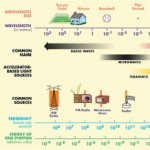- This topic has 23 replies, 10 voices, and was last updated 9 years, 9 months ago by
 Aadil Raza.
Aadil Raza.
-
AuthorPosts
-
-
March 16, 2016 at 3:55 am #32938
 Aadil RazaParticipant
Aadil RazaParticipantDear All,
I have observed that any change in these two values makes a difference while getting BER value. I want to know what is the criteria of setting these two values? If any mathematical relationship then please do share with me.
Regards
-
March 16, 2016 at 2:37 pm #32963
 Aabid BabaParticipant
Aabid BabaParticipantHello aadil,
Well as far as i am concerned there is not a particular expression for selecting sequence length mentioned by optisystem in any tutorial or in the component help of any component.
You are right the performance does get better. I had gone through one of the Damian’s post where he had mentioned about sequence length. I am posting the link. I hope you find it useful.
Regards -
March 16, 2016 at 3:01 pm #32968
 SAHIL SINGHParticipant
SAHIL SINGHParticipantHello aadil,
I agree with aabid baba..I have also not heard about the expression for selecting sequence length mentioned by optisystem in any tutorial or in the component help of any component.
Regards
Sahil Singh
-
March 16, 2016 at 3:11 pm #32971
 FAYIQA NAQSHBANDISpectator
FAYIQA NAQSHBANDISpectatorHI ALL
I agree with aabid there aint any mathematical expression provided by optiwave itself..I feel both sequence length as well as samples per bit are chosen as per the system requirement. I strongly feel that increasing sequence length is in favor of increasing the system accuracy and henceforth the overall performance of the system. You may chose both as per your your requirement. I hope it is helpful for you…
Thanks and regards -
March 16, 2016 at 3:48 pm #32978
 Mohamed Ben zegalamParticipant
Mohamed Ben zegalamParticipantHi aadilqau,
As they mention before, there is no any formula or criteria that shows how can we choose or calculate sequence length or samples per bit. As far as I know, for the sequence length, you have to increase it as much as you can to get good performance in terms of BER for example. and for the sample per bit you can increase until the sample rate can cover the spectrum of your design (for example: if you have RF in range of 40 GHz, you need to increase the sample per bit until the sample rate be more than 80 GHz). however the RAM of your computer is also a factor for increasing both of them, so there is a limit of increasing these two parameters in order to avoid system shut down.
Kind regards
Mohamed -
March 16, 2016 at 5:28 pm #32984
 Naazira BadarParticipant
Naazira BadarParticipantHi all..
As all have rightly mentioned , there hasn’t been any formula seen coming across for setting the sequence length.
However larger sequence length is bound to result is better performance because larger the sequence length , larger the number of samples taken and hence larger the accuracy.Regards.
-
March 17, 2016 at 2:39 am #32995
 FAYIQA NAQSHBANDISpectator
FAYIQA NAQSHBANDISpectatorHELLO EVERYONE
Yesterday i was going through one of the older tutorials of the optisystem and i came across some mathematical expressions regarding bits per sample , total number of samples and more importantly the sequence length…I thought it may be relevant but i could not understand about the time window and its relation with other parameters.. I guess the time window here may be the simulation time which in previous posts we had discussion about. I am attaching the screen shot of that tutorial page… I hope someone understands it properly and explains to all..
Thanks and regards-
March 17, 2016 at 3:01 am #33003
 Aabid BabaParticipant
Aabid BabaParticipantHello fayiqa,
Thanks for sharing the screenshot. It could be indeed very helpful regarding different queries about the bits per sample and sequence length. Also i agree with you here , the window time can be the simulation time but i still have a doubt because it has mentioned it to be in nano seconds which is not the case as far as i know. But yeah we can’t count it out. I hope someone rightly puts the explanation.
regards-
March 18, 2016 at 3:02 am #33066
 FAYIQA NAQSHBANDISpectator
FAYIQA NAQSHBANDISpectatorHI AABID
you’re welcome..i thought of sharing it with an intention that someone may get an idea what is this expression all about..i hope someones helps in answering this query put forth many times recently..i am curious to know about this relation between sequence length , simulation time etc..Thanks and regards
-
-
-
March 17, 2016 at 5:49 am #33021
 MHD NAParticipant
MHD NAParticipantthere is not a particular expression for selecting sequence length mentioned by optisystem in any tutorial or in the component help of any component.
-
March 18, 2016 at 6:01 am #33075
 Taiwo Ambali AbiolaParticipant
Taiwo Ambali AbiolaParticipantThanks for the good question and the right answers given so far. As far as I am concern, I have really learned a lot from the post. one thing that is missing so far is that both must be power of two. That is , 2^(x). The higher the sequence length, the more data to work on, and the better the result you get, though at the expense of your system memory as said in some posts.
Although, one thing that is yet to be cleared to me is that, if the memory of my system is higher than that of the others, I will definitely get better results base on my ability to increase my sequence length. Then, whose system (the one with higher or lower memory) can we use to predict a real experimental implementation or are these parameters (sequence length, etc) equally adjustable in the experiment?. Thanks alot
-
March 18, 2016 at 6:57 am #33078
 FAYIQA NAQSHBANDISpectator
FAYIQA NAQSHBANDISpectatorHELLO TAIWO
Well what i have understood is that in case of our systems (PC) we all might be having enough high RAM to in cooperate large sequences..and as a result our designed systems will be having very high accuracy but the thing is if the system or hardware where we need to implement it would be having sufficient memory to in cooperate such large sequences..I think there would be some limit in practical systems..you can’t implement very large sequences there..
thank and regards -
March 18, 2016 at 10:06 am #33102
 Aadil RazaParticipant
Aadil RazaParticipantThanks for valuable discussion. Optiwave team is requested to resolve the issue properly. Because i have a great variation in results for different sequence length and sample per bit. I will share some resuts for same system but varying sequence length and sample per bit. You will observe abnormal behavior….
-
March 18, 2016 at 11:44 am #33127
 FAYIQA NAQSHBANDISpectator
FAYIQA NAQSHBANDISpectatorHI AADIL
Indeed it has been very good and productive discussion throughout..and i hope optiwave support will reply to this query…
And you are right in saying that results vary with changing the bits per sample and sequence length which i have have observed myself few times..I hope this issue gets sorted out with good explanation..
Thanks and regards
-
-
March 18, 2016 at 10:16 am #33106
 Naazira BadarParticipant
Naazira BadarParticipantHi aadilqau..
Like I said earlier, the accuracy of your system depends upon the number of samples you take. So if you change this value, your results are bound to change.
Regards.
-
March 18, 2016 at 3:17 pm #33168
 SAHIL SINGHParticipant
SAHIL SINGHParticipantHI AADIL,
I agree with Fayiqa Naqshbandhi that this has been very good and productive discussion throughout..I also expect the optiwave support to reply to this query… Also keep in mind that the accuracy of system depends upon the number of samples you take… S o changing the number of samples will lead to the change in results..
Regards
Sahil Singh
-
March 21, 2016 at 7:54 am #33458
 Aadil RazaParticipant
Aadil RazaParticipantDear All,
I am attaching a file where I made a simple setup for analyzing variation in BER …
Without touching the other parameters..if you set sequence length 32 you will get higher Q factor for above BER Analyzer_1 as compared to other BER Analyzer_2. And it should follow this pattern because received power of upper photo diode (Optical Power Meter_2) is higher than the lower photo diode (Optical Power Meter_3).
When you increase the sequence length above 32 like 64, 128, 256 etc…The received power of both photo diode decreases but with the almost same difference between them. (That is the received power of upper diode is always higher than lower one). But Q factor is now decreasing for upper arm instead of increasing whereas Q factor of lower arm started increasing (Contradiction with theory). This is making me very disturbed since last week….Why this happens?
Regards
-
March 21, 2016 at 7:59 am #33461
 Aadil RazaParticipant
Aadil RazaParticipantI am also attaching snapshot for those who do not have latest version
-
March 21, 2016 at 9:24 am #33465
Damian Marek
Participantaadilqau,
This is a common question and has been asked other places on the forum. It is important to understand that the BER is fundamentally random as it depends on random noise and even the random bit sequence created by the Pseudo-Random Sequence Generator (ok not truly random, but for all intents and purposes!).
Thus even from simulation to simulation without changing any parameters the BER can change drastically. This is where the sequence length comes in. For short sequences the BER can vary quite a bit depending on the exact sequence. Having a larger sequence length helps to average out this random behavior and give a better approximate BER (check out: https://en.wikipedia.org/wiki/Expected_value).
Samples per bit is easier to understand and its impact. Since on computers we need to approximate the simulation as a discrete problem the time variable is discretized. The continuous nature of time is sampled and approximated. Since a lot of the models in OptiSystem depend on the time value, a larger samples per bit value means the simulated discrete system is a better representation of the real physical system. In other words a larger samples per bit value will increase the accuracy of the simulation at the cost of computing time.
Regards
-
March 21, 2016 at 10:48 am #33469
 Aabid BabaParticipant
Aabid BabaParticipantHello Damian,
Thanks for clearing the doubts regarding many things here like the selection of sequence and its length , The variation of BER and other such important notes.
Here i would like to take the opportunity to ask you what basic steps do we need to take to reduce the simulation time. My research project takes more than 26 minutes with 4 global iterations and 4 sweeps. The transmitter power i have taken is around 8 dBm and one more transmitter which i had to in cooperate transmits at 10 dbm. please any suggestions how to reduce the simulation time of the system..?
Regards -
March 22, 2016 at 7:47 am #33540
 Aadil RazaParticipant
Aadil RazaParticipantThanks Damian.
So for my attached file how i determine sequence length and sample per bit. Please modify it to obtain best result. Keep in mind please that received power in upper arm is higher than lower one. So higher arm should good give good Ber than lower arm. -
March 22, 2016 at 10:09 pm #33563
 Sanjeev kumarParticipant
Sanjeev kumarParticipantSir can we set the bit rate sweep for layout window?
-
March 22, 2016 at 10:20 pm #33564
 Sanjeev kumarParticipant
Sanjeev kumarParticipantCan we set parameter sweep for global layout window too?
-
March 23, 2016 at 2:07 am #33577
 Aadil RazaParticipant
Aadil RazaParticipantNo. We can’t sweep global parameters.
-
-
AuthorPosts
- You must be logged in to reply to this topic.
